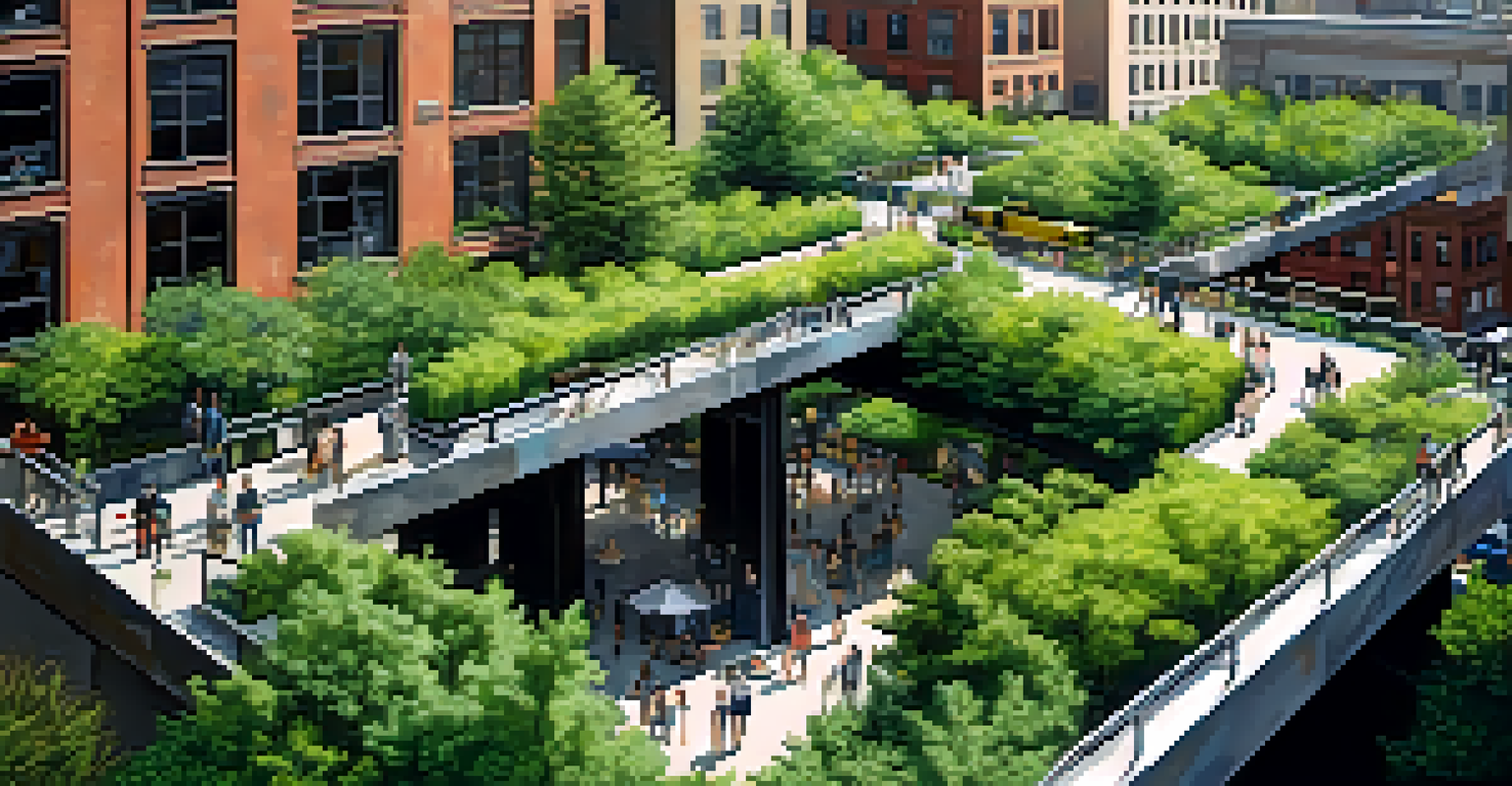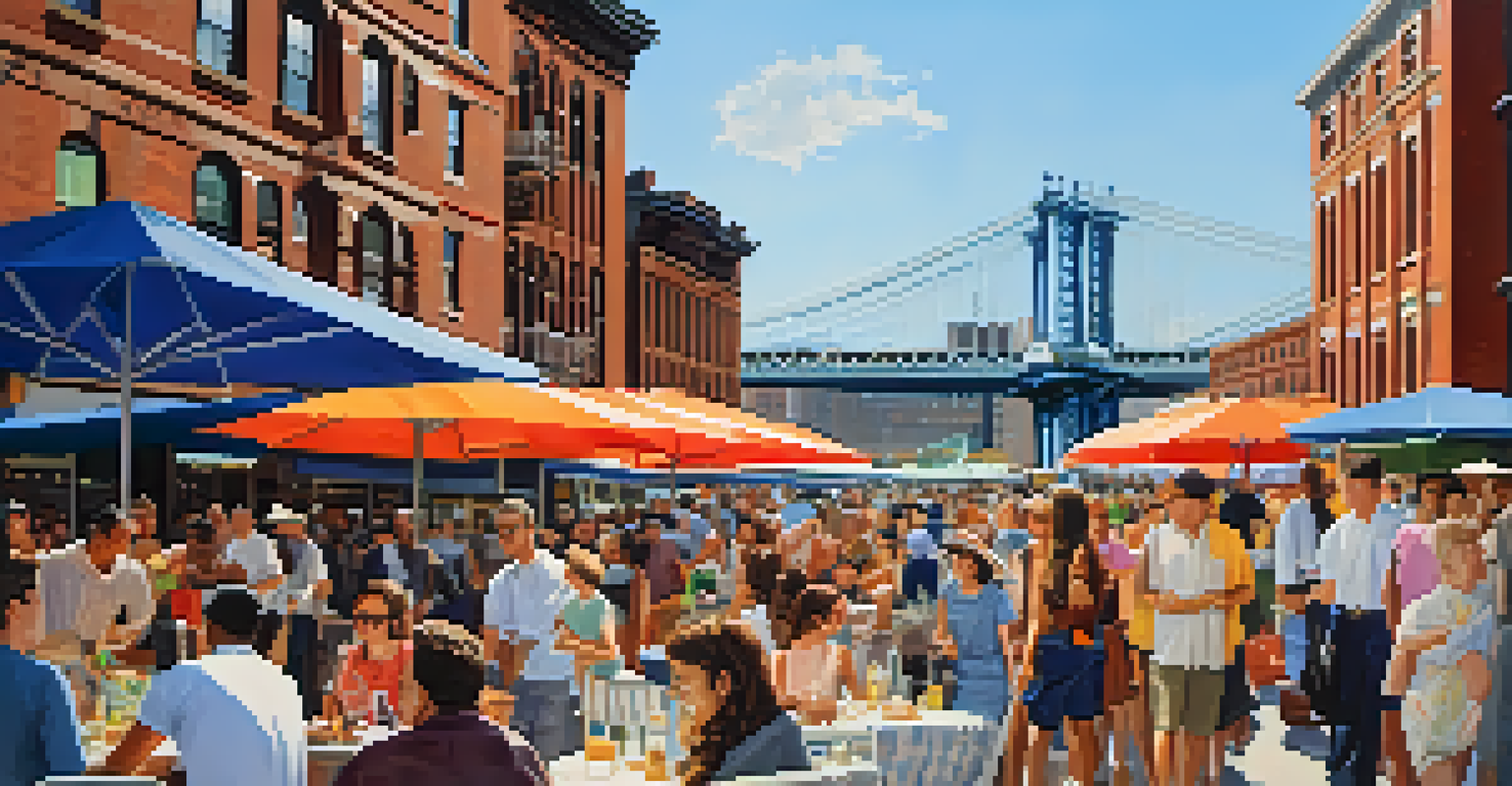Historical Preservation vs. Infrastructure Development in NYC

The Importance of Historical Preservation in NYC
New York City is a treasure trove of history, with landmarks that tell the stories of its past. Historical preservation is crucial for maintaining the cultural fabric of the city, allowing future generations to connect with their heritage. By protecting sites like the Statue of Liberty and the Brooklyn Bridge, we honor the visionaries who shaped the city.
Preservation is a form of sustainability; it is about more than just saving buildings, it's about saving the stories and the memories that are part of our cultural heritage.
Preservation efforts often involve communities rallying together to save beloved buildings. This collective action fosters a sense of belonging and pride among residents, strengthening local identities. Additionally, historic sites can boost tourism, providing economic benefits that support local businesses.
However, preserving history doesn't come without its challenges. As the city grows and evolves, the need for modern infrastructure becomes increasingly pressing, creating a tug-of-war between maintaining the old and accommodating the new.
The Need for Infrastructure Development in a Growing City
As one of the most populous cities in the world, New York City faces immense pressure to develop its infrastructure. This includes updating transportation systems, enhancing utilities, and expanding public spaces to meet the demands of its diverse population. Infrastructure development is essential for ensuring safety, efficiency, and accessibility for all residents.

The city’s aging infrastructure often struggles to support its modern needs, leading to issues such as subway delays and water main breaks. Investing in new technology and facilities can help alleviate these problems, making daily life smoother for millions. Moreover, improved infrastructure can attract new businesses, spurring economic growth.
Preservation Enhances Cultural Identity
Historical preservation fosters community pride and strengthens local identities while boosting tourism.
Yet, the push for development can sometimes overshadow the historical significance of certain areas. This is where the debate intensifies: how do we strike a balance that respects our past while building for the future?
Conflicts Arising from Preservation and Development
The clash between historical preservation and infrastructure development often leads to heated debates. For instance, proposals to build new transit lines can threaten historic neighborhoods, sparking outrage from community members who fear losing their cultural landmarks. These conflicts highlight the delicate dance between progress and preservation.
Cities are the greatest creations of humanity, and they need to be preserved as the cultural touchstones of our past, while we also build for the future.
One notable example is the construction of the Second Avenue Subway, which faced opposition from residents concerned about the impact on historic buildings. The tension between preserving the past and accommodating the needs of a growing population creates a challenging environment for city planners.
Ultimately, these conflicts reveal the importance of dialogue and compromise. Engaging stakeholders in discussions can lead to creative solutions that honor both the past and the future.
Successful Examples of Balancing Both Needs
Despite the challenges, there are successful examples in NYC where preservation and infrastructure development coexist harmoniously. The High Line, for instance, transformed an old railway track into a vibrant green space while preserving its industrial history. This project not only revitalized a neighborhood but also became a symbol of innovative urban development.
Another example is the restoration of the historic South Street Seaport, which has undergone revitalization while maintaining its unique character. This blend of modern upgrades and historical elements showcases how cities can evolve without losing their identity.
Infrastructure Needs Drive Development
As NYC grows, the demand for updated infrastructure highlights the need for a balance between development and preservation.
These successes demonstrate that thoughtful planning can create spaces that honor history while enhancing urban life. By learning from these examples, other cities can find ways to navigate similar challenges.
The Role of Community Engagement in Decision-Making
Community engagement plays a crucial role in navigating the complexities of preservation and development. When local residents are involved in decision-making, their voices can shape the outcome in ways that reflect the community's values and needs. This collaboration fosters a sense of ownership over both historical and modern spaces.
Public meetings, workshops, and collaborations with local organizations can help gather diverse perspectives. Engaging with residents allows city planners to understand the significance of certain sites and the community's attachment to them. This insight can lead to more thoughtful development that respects the past.
Moreover, when people feel heard, they are more likely to support projects, even if they involve some compromises. Building consensus is key to creating a more unified vision for the city's future.
The Legal Framework Surrounding Preservation and Development
Understanding the legal framework around historical preservation is essential for navigating these complex issues. In NYC, laws like the Landmarks Preservation Law protect significant buildings and neighborhoods from demolition or alteration without proper review. These regulations aim to ensure that the city’s rich history is preserved amidst ongoing development.
However, these laws can sometimes complicate infrastructure projects, leading to delays and increased costs. Developers must navigate a maze of approvals and community input, which can be daunting yet necessary to maintain the integrity of historic sites.
Community Engagement is Essential
Involving local residents in decision-making processes ensures that both historical significance and modern needs are respected.
By striking a balance between legal protections and the need for modernization, NYC can create a framework that supports both preservation and development. This approach not only safeguards the past but also paves the way for a sustainable future.
Looking Ahead: The Future of NYC's Urban Landscape
As New York City continues to grow, the challenge of balancing historical preservation with infrastructure development will only intensify. With climate change and urban density on the rise, innovative solutions will be essential. Forward-thinking policies that prioritize both preservation and modernization can lead to a more resilient city.
Emerging technologies and sustainable practices offer exciting opportunities for integrating historical elements into new developments. For instance, using eco-friendly materials in the restoration of historic buildings can ensure their longevity while respecting their original design.

Ultimately, the future of NYC's urban landscape lies in collaboration, creativity, and an unwavering commitment to honoring its rich history while embracing the possibilities of tomorrow.